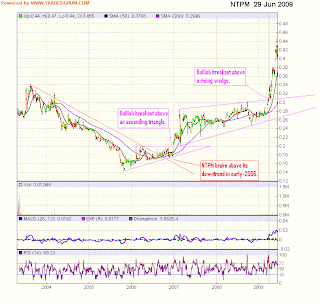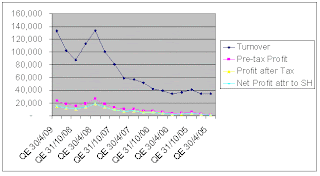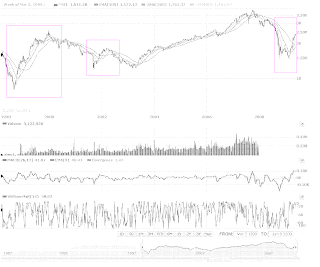Two weeks ago, F&N has surpassed its high of RM9.10 achieved in October 2008. F&N made a high of RM9.90 today. What's more interesting is that the rally is achieved on extremely thin volume. Are we see a Diet Coke and Mentos eruption?
From the monthly & weekly charts below, we can see that F&N has been rising in a slowly expanding channel. The immediate upside boundary of this channel is about RM10.00-10.40, while the downside boundary is about RM7.60-8.30. One can sell at the upside boundary and/or buy at the downside boundary.

Chart 1: F&N's monthly chart as at 29/6/2009 (Source: Quickcharts)

Chart 2: F&N's weekly chart as at 29/6/2009 (Source: Quickcharts)
I have appended below F&N's last 8 quarterly results as well as a chart of the movement of its top-line & bottom-line for the past 10 quarters. F&N's turnover has been fairly stagnant for the past 6 quarters. Despite the increased turnover in the earlier 4 quarters, F&N's bottom-line has been flattish through the past 10 quarters.

Chart 3: F&N's last 10 quarterly results (presented in line chart)

In term of valuation, F&N (closed at RM9.50 yesterday) is now trading at a trailing PE of 19 times (based on the last 4 quarter's EPS of 50.2 sen). This compared favorably to Nestle (closed at RM31.50 yesterday) which trades at a trailing PE of 22 times (based on FY2008 EPS of 145 sen). However, one must bear in mind that F&N's business may be impact by the cancellation of the Coca-Cola Bottler’s Agreements & Distributor’s Agreement.
Based on valuation & technical consideration, I believe that F&N could be a trading SELL if it ever reach a high of RM10.00-10.40.













































